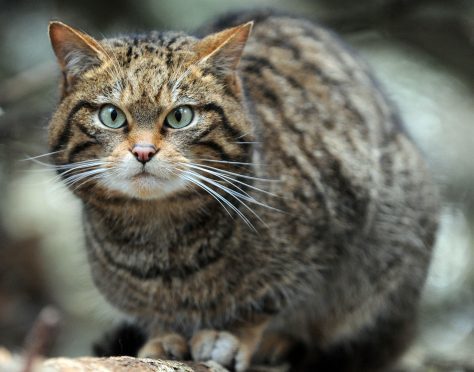A project to try to save Scottish wildcats from extinction is to halve the core areas where it will concentrate its efforts on protecting the species.
Wildcats, known as the “Highland tiger” are the UK’s only remaining large mammal predator and the only surviving cat native to Britain. Only a few dozen may remain.
Now Scottish Wildcat Action says it did not find evidence of wildcats in many of the areas it surveyed.
It has announced that its five-year project to save Scotland’s wildcats will now focus on five key regions, where evidence suggests that at least 19 wildcats are roaming free.
The five areas where the wildcat project will now concentrate will be Northern Strathspey, Angus Glens, Strathpeffer, Strathbogie and Morvern.
The shift in focus comes after years of extensive survey work across nine areas helped the SWA team narrow its aim to five places, which will allow for the most effective use of the programme’s limited resources.
SWA is a project supported by the Heritage Lottery Fund, which aims to halt the decline of the species by 2020. It’s led by Scottish Natural Heritage (SNH) and is a partnership of 20 organisations.
Project manager Roo Campbell, said: “It is disappointing that we did not find evidence of Scottish wildcats in every area we undertook to survey, but we now have a very strongly defined area that we can focus all our attention on.
“Although it shows just how endangered the Scottish wildcat is, it also underlines how important our work is in the other priority areas where we have detected wildcats.”
He added: “We’ve had tremendous support from local volunteer groups, landowners and farmers, and our 30 volunteers and team members have put thousands of hours of work into this.
“We would like to thank them for their huge effort.
“Due to their hard work, we now have a better chance to make effective use of our resources to better the chances of Scottish wildcats’ survival in the wild.” There were warnings in 2012 that numbers of pure-bred wildcats may have fallen to about 35 individuals. The wildcat faces extinction because of breeding with feral cats, disease, habitat loss and being run down on roads.
